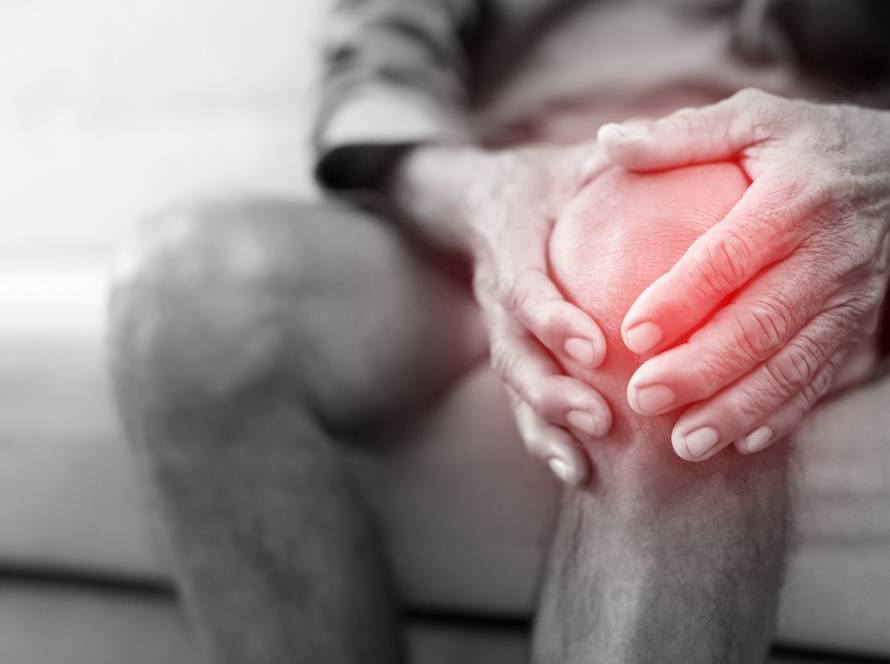Life expectancy varies substantially between people with and without sarcopenia. Sarcopenia, the age-related loss of muscle mass and strength, affects 36.5% of older adults living in communities. This makes it a systemic problem for our aging population.
This piece will get into the question “what is life expectancy with sarcopenia?”, exploring how this condition develops, how it affects longevity and the ways to extend both lifespan and healthspan for people affected by age related muscle loss.
How does sarcopenia affect lifespan in older adults?
Life expectancy with sarcopenia can be significantly reduced, especially in older adults with severe muscle loss and other chronic conditions. Sarcopenia increases the risk of falls, fractures, hospitalization and loss of independence, all of which contribute to higher mortality rates.
Studies show that individuals with sarcopenia may have a shorter lifespan compared to those with preserved muscle mass and strength. However, early detection and lifestyle interventions, such as strength training, protein-rich nutrition and vitamin d, can slow progression and improve both healthspan and survival.
What is sarcopenia and why it matters
Sarcopenia is a progressive disorder that affects skeletal muscles. It causes people to lose both muscle mass and function. Healthcare professionals now recognize it as a distinct medical condition that deeply impacts the health of aging populations.
Definition and diagnostic criteria
The understanding of sarcopenia has changed substantially since Rosenberg introduced it in 1989. The original definition simply described age related muscle loss. Modern definitions now cover both the amount and quality of muscle tissue. The European Working Group on Sarcopenia in Older People (EWGSOP2) created a staged approach to diagnosis. Low muscle strength points to probable sarcopenia. Low muscle mass confirms it. Poor physical performance indicates severe sarcopenia.
Doctors often use the SARC-F questionnaire to identify clinical cases. This questionnaire checks symptoms related to strength, walking assistance, rising from chairs, climbing stairs and falls. The diagnosis usually needs measurements of grip strength, walking speed and muscle mass. Doctors use techniques like dual-energy X-ray absorptiometry (DEXA), bioelectrical impedance analysis (BIA), or sometimes MRI or CT scans. Sarcopenia received its official disease classification in 2016.
Primary vs secondary sarcopenia
The mechanisms behind sarcopenia help categorize it. Primary sarcopenia happens when aging alone seems to cause muscle deterioration. Secondary sarcopenia develops because of specific factors beyond age. These factors include systemic diseases (especially those with inflammation), physical inactivity, not enough protein intake, anorexia, malabsorption or limited access to food.
Older adults often have multiple causes contributing to their sarcopenia. This complex nature explains why doctors now see sarcopenia as a geriatric syndrome rather than a simple condition.
How it is different from general muscle loss
Muscle atrophy always involves tissue reduction, but sarcopenia has unique features. Anyone can experience general muscle atrophy from disuse or illness. Sarcopenia specifically relates to age-associated degeneration.
On top of that, it affects both muscle fiber size and total fiber numbers. General atrophy usually only affects fiber size and keeps the fiber count stable. Sarcopenia also leads to progressive loss of motor neurons without proper compensatory reinnervation. It causes changes in muscle proteins and mitochondrial dysfunction, these mechanisms rarely show up in temporary muscle loss.
How sarcopenia affects life expectancy
Sarcopenia cuts life expectancy drastically through several mechanisms and poses a major challenge to healthy aging.
Increased risk of falls and fractures
Muscle mass and strength loss severely affects balance and mobility, which leads to more frequent falls. Research analysis shows people with sarcopenia are 1.60 to 1.89 times more likely to fall than those without it. These falls often result in fractures and sarcopenia increases fracture risk by 1.71 to 1.84 times.
Living situations play a key role in fall risk. Studies show that older adults living in communities with sarcopenia show a much higher fall risk (OR = 1.69) compared to those without the condition. Nursing home residents show a lower correlation, mainly because other health conditions mask sarcopenia’s effects in these settings.
Association with cardiovascular and other mortality
Sarcopenia affects mortality through multiple pathways beyond physical injuries. People with this condition face higher cardiovascular disease mortality rates, especially women who are 1.61 times more likely to die from cardiovascular issues, according to studies.
The condition raises all-cause mortality risk by about 29%. This relationship stays true regardless of age, how well someone functions or other health conditions.
Factors that influence prognosis in sarcopenia
Several factors shape the outlook of people living with sarcopenia. These factors affect both how long they live and their quality of life. We can improve outcomes by understanding risk factors that we can change.
Physical inactivity and sedentary behavior
A sedentary lifestyle makes sarcopenia outcomes worse by a lot. Meta-analysis shows that being sedentary has a direct link to sarcopenia, with a pooled odds ratio of 1.36. This connection stays strong whatever the physical activity level, that indicates sitting time is a separate risk factor. Older adults spend about 85% of their waking hours doing sedentary activities, roughly 8-12 hours daily.
Research reveals that inactive adults have a 1.7-2.0 fold higher risk of sarcopenia compared to active ones. Programs that focus on less sitting time might work better than those that just need exercise, especially when you have functional limitations.
Nutritional deficiencies and protein intake
Poor nutrition has a high impact on how sarcopenia develops. About two-thirds of older adults are either malnourished or at risk. People who eat less protein tend to have less lean mass and weaker grip strength.
The link between protein intake and sarcopenia isn’t simple. Some studies suggest eating more than the standard amount (above 0.8g/kg/day). Yet others found that high protein intake oddly associates with higher sarcopenia risk (OR 2.04).
Micronutrients play vital roles beyond protein. Muscle weakness links to vitamin D deficiency. Lower sarcopenia risk associates with calcium intake. Sarcopenic people often show magnesium deficiency. Muscle problems connect to selenium deficiency.
Chronic diseases and inflammation
Inflammation drives sarcopenia progression. Pro-inflammatory cytokines like IL-6, TNF-α and CRP increase fat while reducing protein synthesis.
Muscle breakdown speeds up with chronic conditions through different pathways. Sarcopenia is 6-fold more likely in diabetes patients, according to studies. Research show that muscle mass drops quickly in critical illness, 51% of critically ill patients have low skeletal muscle mass.
Sex and obesity as modifying factors
Sex differences affect how sarcopenia progresses by a lot. Men lose muscle faster despite having more muscle mass to start. Sarcopenia shows up in 19.2% of males compared to 8.6% of females, according to studies.
Sarcopenic obesity (SO) brings bigger risks than either condition alone. Men with SO have 4.21-fold higher odds of osteoporosis. Women face 4.21-fold higher hyperglycemia risk.
Interventions that can improve outcomes
The right interventions can improve outcomes by a lot if you have sarcopenia. These improvements can extend both lifespan and quality of life. Research shows several proven approaches work well, from physical exercise to nutritional support.
Resistance training and physical activity
Resistance exercise remains the life-blood of sarcopenia management. Research consistently shows that well-prescribed resistance training builds muscle mass, strength and physical performance in older adults. The most significant benefits come from programs with at least two weekly sessions over three months.
High-intensity progressive resistance exercise has increased muscle strength by an astonishing 174% in nonagenarians. Resistance training should target major muscle groups with intensity that gradually increases (40-60% progressing to 70-85% of one-repetition maximum). Better outcomes for overall physical function come from programs that combine resistance, aerobic and balance exercises.
Protein, creatine and vitamin D supplementation
Exercise management works better with proper nutrition. Higher protein intake benefits older adults with this condition. Muscle strength improves with leucine-rich protein supplements. Creatine supplementation during resistance training adds lean tissue mass and strengthens both upper and lower body. Experts recommend vitamin D supplements when people have deficiencies below 20ng/mL.
Early screening and customized care plans
Tools like the SARC-F questionnaire help catch sarcopenia early and start treatment quickly. Results improve with customized approaches that look at baseline strength, mobility limitations, and nutritional status. Exercise plans should match individual abilities by adjusting frequency, selection, intensity, volume and rest periods. Phone reminders, video demonstrations and group sessions help people stick to their prescribed treatments.
Clinical trials and emerging therapies
Scientists are testing new treatments like selective androgen receptor modulators (SARMs) that build lean body mass and myostatin pathway inhibitors. Biophytis’s BIO101 shows promise to preserve muscle strength, according to studies. On top of that, advanced techniques like stem cell therapies and gene editing target muscle regeneration.
Muscle wasting condition called sarcopenia poses a real threat to older adults’ longevity and quality of life worldwide. It leads to serious health risks through more falls, broken bones and heart problems.
We can slow it down or even reverse it with the right approach. This makes muscle health a basic part of living longer, not just an optional piece of healthy aging. The best way to prevent sarcopenia’s effects on lifespan and health is to check muscle strength, mass and function regularly starting in middle age.


